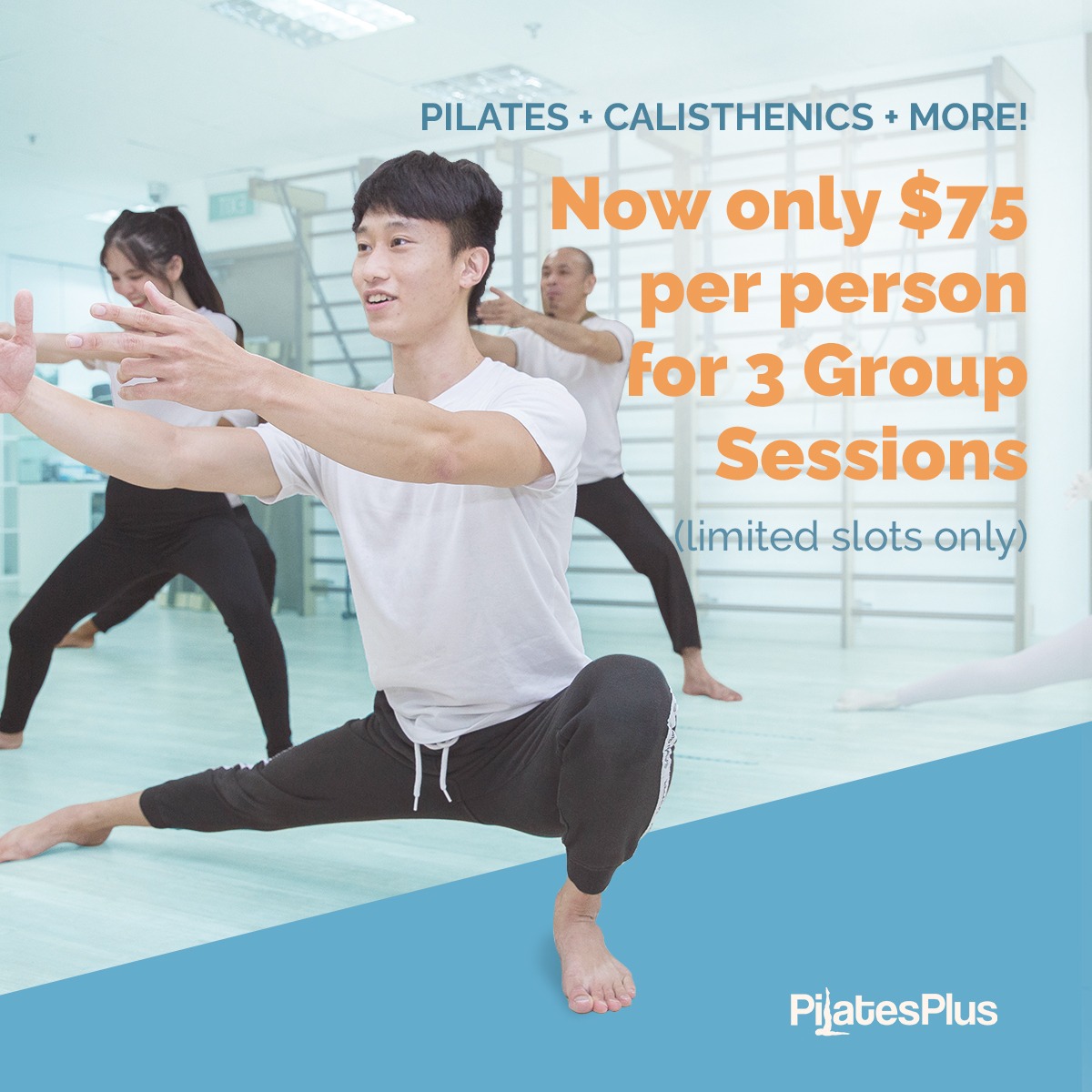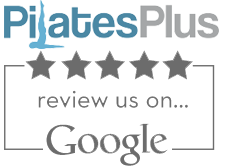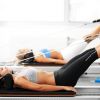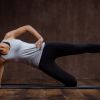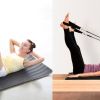Pilates Singapore: What To Look For In A Pilates Studio!

Pilates classes and Pilates studios in Singapore must have more than tripled in the last 5 years. The popularity of the Pilates method has been steadily rising. With its aging population and many people putting more priority on health education, Pilates and fitness, in general, will continue to grow. The more the industry grows, the more commercial it will become. Choosing the right Pilates studio can be overwhelmingly confusing.
The best way to attend a Pilates class in Singapore is from a full Pilates studio furnished with all the necessary Pilates equipment that offers group and private session training. The classes have to be guided by Pilates teachers who are highly qualified and have years of experience in the Pilates practice.
We’ll try to go to more details on what you need to note in selecting the Pilates studio you will be joining.

What Pilates equipment the studio needs to have?
Though Pilates exercises can be done on the mat, there are movements that are uniquely designed and are more effective when done on the Pilates equipment. To get the full benefit of the Pilates method, the studio needs to have the necessary equipment to teach these exercises.
The Pilates Reformer
This is the most common equipment in the Pilates industry. It is very popular as Reformer exercises can be done in a group class setting. The Reformer machine has the size slightly smaller than a single bed, with only half of its length covered by a moving carriage.
The carriage has rollers underneath so it can slide forward and backward on the Reformer’s frame and is connected by springs (four or five springs of different tension) to the frame at the front. The carriage is connected to the back of the frame by straps that are looped in a pulley system. And at the front of the Reformer is a foot bar that can be adjusted in height.
This machine has a very interesting design that you can use in hundreds of ways and in many different positions. It can work on stretching your hips, spine, and arms. You can also do full-body strengthening exercises on the Pilates reformer. Here is an article I wrote about the things you can do on the Pilates Reformer.
Cadillac in Pilates
This machine is the centerpiece of a Pilates studio, not only because of its size but because of its beauty and, at the same time, scary-looking torture-like design. The Pilates Cadillac originated from a hospital bed that Joseph Pilates modified, so the patients in the hospital can exercise while recovering from their injuries.
It looks like a high bed that is supported by a stainless frame from the top and sides. Springs can be attached to the frames on both ends via hooks or sliding bars so you can adjust their position. You can also attach a trapeze at the top frame which you can use for hanging and doing different types of stretching.
The Pilates Cadillac is mainly used in a Private session setting and it is very effective to rehabilitate clients with back injuries and for older students who can’t go down safely onto the regular Reformer.
You can do a full-body workout on the Cadillac, and because of the top frame, you will have additional options to do hanging exercises as well.
Spine corrector
One of the best apparatus to loosen up the tightness in your back and strengthen your core muscles.
Aside from stretching the spine, you can do most of the classical mat exercises on the Pilates Spine Corrector. It is definitely a must-have for a Pilates studio.
Ladder barrel
A combination of a high barrel and a ladder, usually made of wood. The ladder barrel is a perfect apparatus to do ballet types of stretches, spine stretches, and core workouts.
The Wunda Chair
This is another piece of equipment where you can only find in a Pilates studio where it can work with your core, arms, legs, balance, and posture.
Foam roller/Release balls
The foam rollers and myofascial release balls are not really original Pilates apparatuses, but they have become very common in Pilates studios.
You can do stability, core, and balance work on the foam roller as well as releasing tight muscles, especially on the lower body.
The release balls are very effective in loosening up myofascial tightness, which is used in conjunction with stretching and mobility work.
Stallbar
This is a very versatile gymnastic equipment that can be used for a variety of exercises. It is commonly used to stretch and strengthen both the upper and lower body.
There have been images of some attachments on the stall bars which resemble the Pilates Reformer. This actually makes sense as Joseph Pilates has studied gymnastics before founding his own exercise method.
Balance equipment
Though balance equipment is not really part of Pilates, in my opinion, it should be included as one of the main fixtures in a Pilates studio.
Pilates exercises are very helpful to the aging population, and it makes sense to place balance work as a permanent part of the program.
Things you need to consider in selecting a Pilates teacher
Unlike working in a regular gym where you just go around the place and grab any dumbells or hop onto any cardio equipment, you need the guidance of a teacher to use the Pilates equipment.
5 years of teaching experience
Results in fitness won’t come quickly; some goals will take months or even years to achieve. It is the same with Pilates, especially when dealing with injuries. So, a Pilates teacher will need long enough experience to learn from students of different levels and backgrounds to really polish their teaching skills.
The teacher has to be practicing Pilates
There is something uniquely bad about the Pilates industry; that not all teachers are practitioners of Pilates. It is very common to study Pilates to get the certification but not really practice the method.
It has become very commercialized that you can even get certified to teach for just 3 days. Ensure that the teacher embodies the movement, truly practices the method, and not just pass the certification examination.
Qualifications and background
Aside from having a Pilates teacher certificate, having a rehabilitation background complements a lot in teaching Pilates as most people take Pilates exercise to recover from injuries.
Another thing you want to consider is for the teacher to have a more varied exercise background. The more the teacher is exposed to a variety of exercises, the better they can understand your goals and needs.
You can read more about us here.
Classes offered by a Pilates studio
A pilates studio should be offering both group classes on the mat and on the Reformer to make it a complete learning experience for the students in their training.
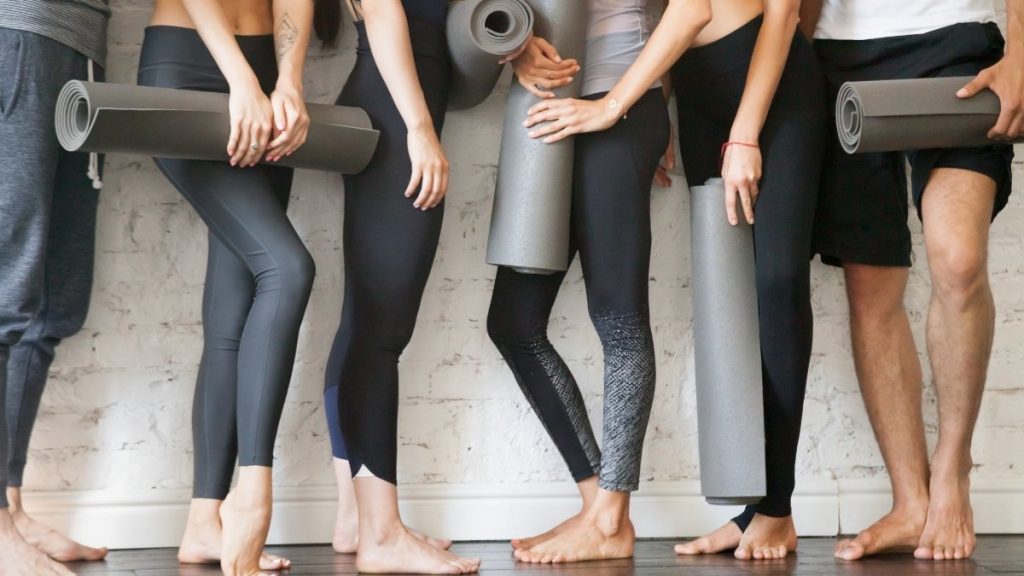
Mat class
A major part of Pilates practice is done on the mat. It is a very good system of exercise to work on the core, mobility training, and posture. Exercises done on the mat is good as you will develop better awareness in your body as you get to work with your own body with minimal distractions.
Pilates mat classes can be harder if you carry a little more body weight compared to somebody lighter, so it is not necessarily a beginner’s class, but it can be adapted as one.
You can reach a pretty high level even with just Pilates mat classes.
Look for a beginner-friendly class, so the pace will be slower for you to catch up in your first session.
Here is a 3 session introductory class that we offer for first-timers in our studio. You can use the credits to attend our mat classes and other non-reformer classes like the Calisthenics and Handstands class.
If you want to know more about the Pilates mat classes we offer at our studio, you can read this article here.
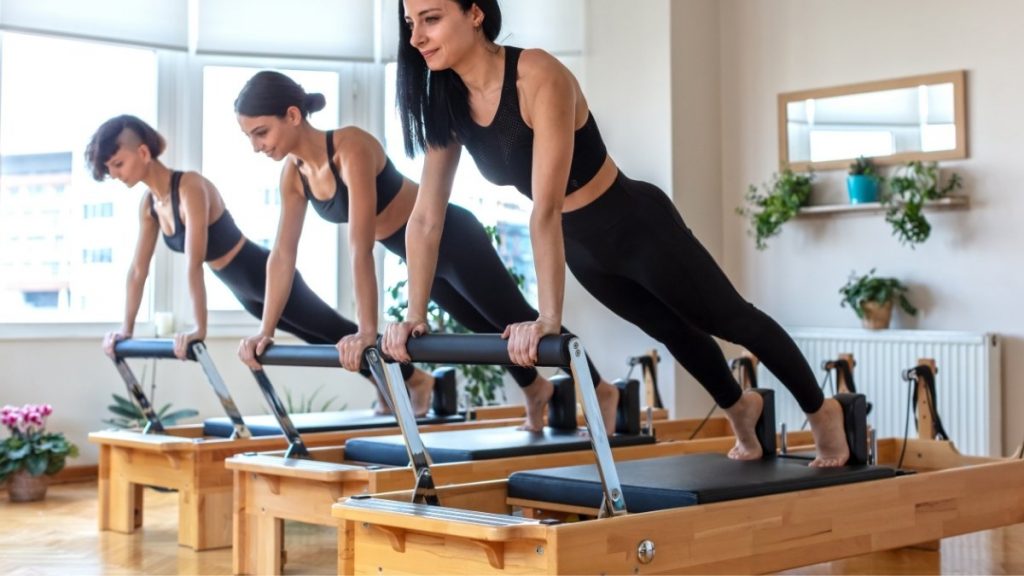
Reformer class
The group Pilates Reformer class offers a different role to your training. Using the machine will guide you with better alignment and better symmetry with your movement. It can make certain movements easier or harder, depending on how you set up the machine.
If you want to go deeper with your Pilates practice, working on the Reformer and other Pilates equipment should be a big part of your routine.
Look for a Reformer Introductory class where it covers the Fundamentals of how to use the machine or take a personal Pilates training for a few sessions. You will understand the method better, and you’ll be able to target your weak points early on in your training.
Here is a 3 session introductory package for our Reformer classes. All our classes are beginner-friendly, small size, and we can accommodate you even if it’s your first time doing Pilates.
Here is an article for more information about the Reformer classes that we do in the studio.
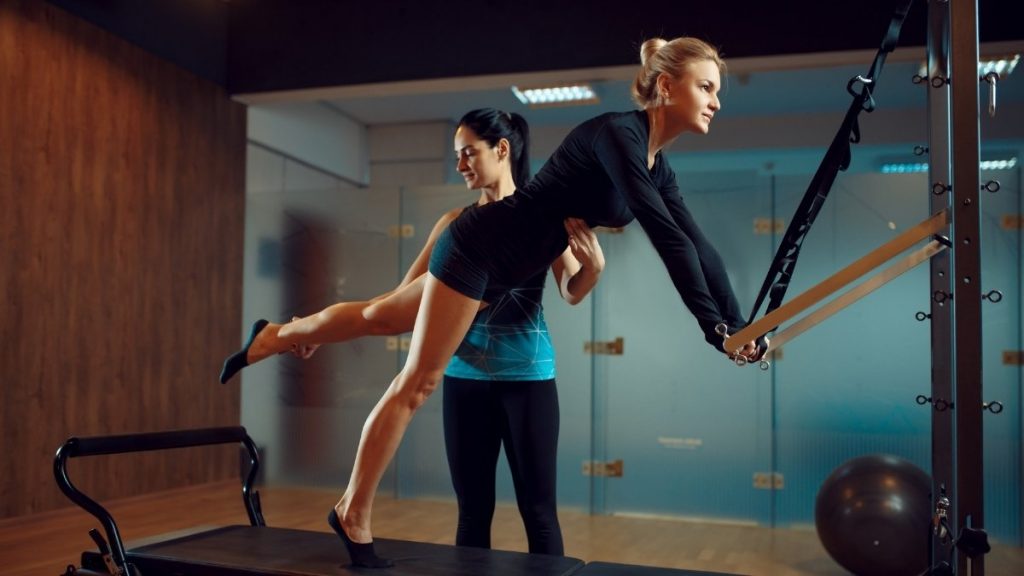
Private session training
The best way to learn Pilates is through Private sessions (one-to-one sessions), so the teacher can customize the program for your level. You’ll have the opportunity to fully utilize all the Pilates equipment that suits your needs and goals.
The progression of the exercises will be paced according to how fast you learn and improve with the movements, which is impossible to achieve in a group class.
One thing you have to take note of in taking personal training is to still be independent in doing the exercises yourself. It is good to mix it up by attending group classes or your own personal practice so you can get out of that dependency relationship with your teacher, which will not be good in the long run.
Contact us to schedule an introductory private session. In these 3 sessions, our experienced teachers will assess you and give you a customized program for your goals. You will also experience the different types of Pilates equipment that you can use for your program.
The Studio’s Pilates Method
There are different types of Pilates methodology that you can learn from. The major categories will be whether it is Contemporary, Classical, or a mix of both. All of the methods can be good for you, but it is good for you to be aware of what the Pilates studio is teaching, so you can also do your own personal research about the method if you want to take your Pilates study seriously.
At PilatesPlus Singapore, we are influenced greatly by the classical method plus some additional teaching by the Pilates masters that we have learned from like Ron Fletcher, Alan Herdman, Pat Guyton, and Michele Larsson.



